| What's Hot! | Products/ Tools | EFI Tuning | Basic Tuning | Advanced Tuning | Chassis Tuning | Advertise with us |
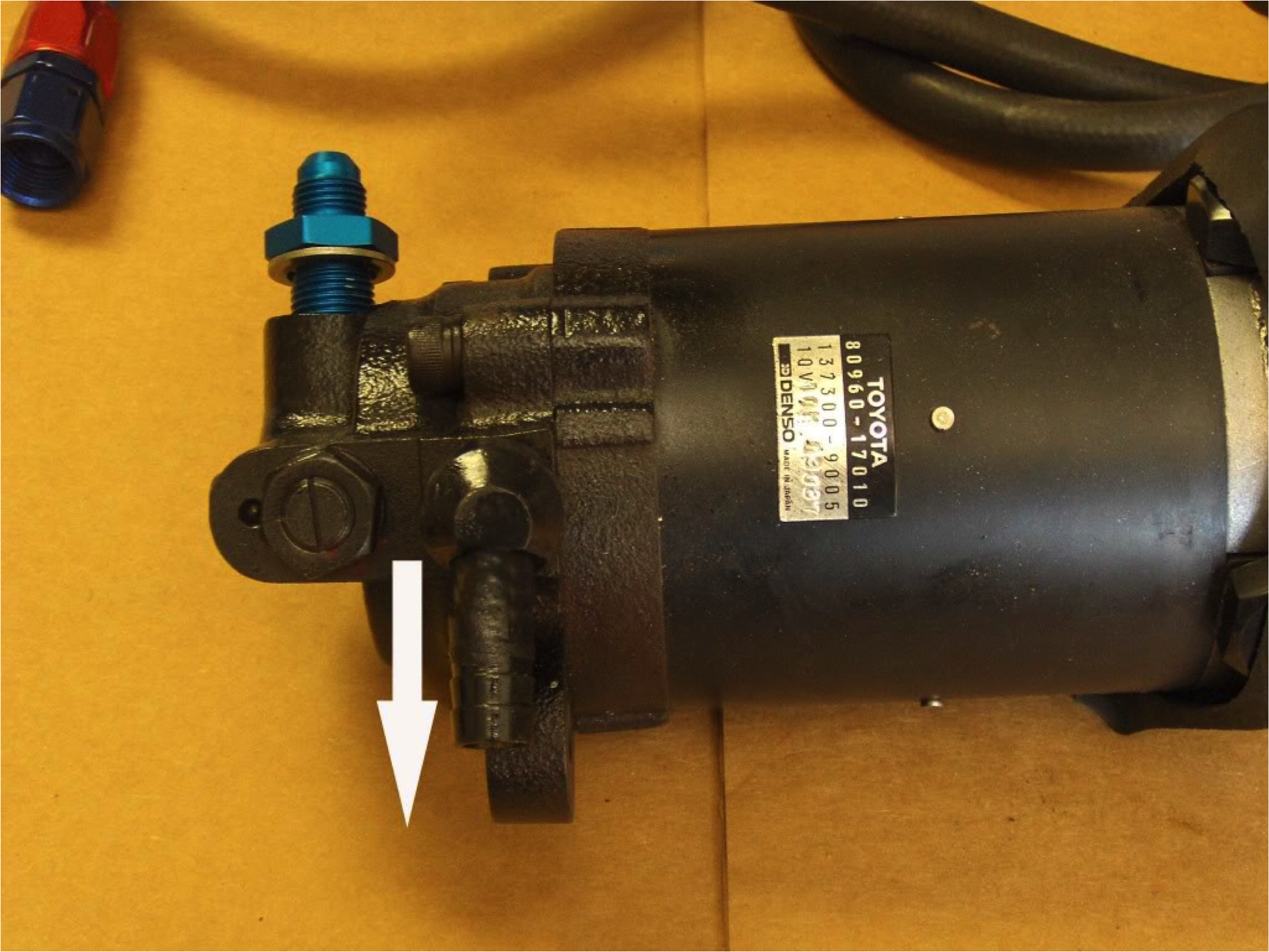
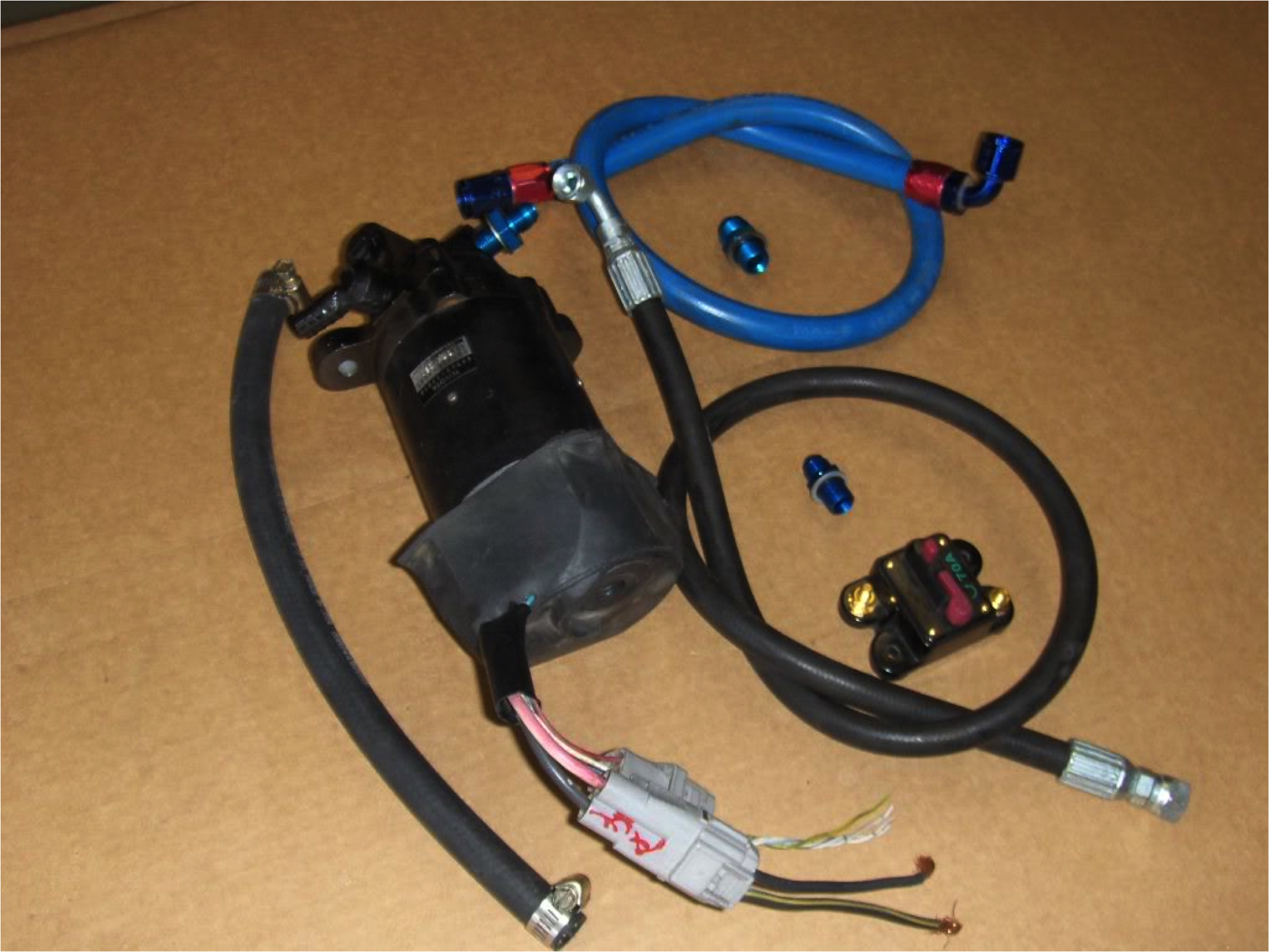
Electronic Power steering
Removing Parasitic Drag to Gain Horse Power
SPECIAL PROJECTS MOTOR SPORTS Electro-Hydraulic Power steering conversion:
This is not an original idea… Credit goes to Derek from Hondata who did the swap before me. I acknowledge many of his findings and quotes. This outlines the adaptation and fitting of a Toyota MRII Electric Power Steering unit to our DC2 Integra Racecars. This system uses an electric motor to drive a hydraulic pump which in turn provides hydraulic pressure to the conventional Honda power steering rack.
We have refined this swap and we will be producing a complete bolt on kit in the near future. The reason for this swap is twofold:
(A) to reduce the Horsepower drag from the engine driven power steering pump. On an engine Dyno the stock DC5 ps pump and rack uses 8.5 hp peak, while in a straight ahead position. On a lower powered B series the loss was 5 hp peak. The power loss from EHPS is between 0.25 and 0.75 hp (via the alternator), depending on steering load.
(B) The reason I wanted the power steering at all is that after over thirty years of International Touring Car Racing, I have found it is faster around a race track than with manual steering. The lap times of a high powered front wheel drive racecar with a lot of castor, will improve if driver fatigue is reduced. Call it old age if you like, but I prefer to finish an event not feeling like I have just survived the fight of my life.
Note that this form of electric power steering is not the same as EPS, as used in the S2000 and EP3 Honda Civic, which used an electric motor directly on the steering rack, with no hydraulic fluid involved.
Disclaimer: This information is provided for those interested in performing the same installation as me. I have tried the vehicle at race speed, it works, and I am completely happy with the results. If you are not mechanically or electrically competent, then this swap is not for you.
The Conversion: The main component is the motor/pump assembly. We used the motor/pump from an early ‘92-‘93 MR2, which used old technology (brushed DC motor, vane oil pump) which was perfect for our purpose. These are available for around $150-$200 used. The pump has a pressure adjustment screw, so matching the pressure to the rack requirements is quite easy. (See Pic. 5)
All you need: 1 - Good Used Toyota MRII Pump.
1 - High pressure hydraulic line with Dash - 6 female fittings on either end.
1 Straight and 1 90 degree bend.
1- Fabricated bracket to mount the pump.
1 - Dash -8 Low pressure fluid line with Dash -8 Female fittings on either end.
1 - 1/2” or Dash -8 Low pressure fluid line from Pump to reservoir.
2 - ½”to 3/4” Hose Clamps for low pressure line from Pump to reservoir.
1 - Fitting Dash -6 Male to 16mm x 1.5
1 - Fitting Dash -6 Male to 14mm x 1.5
1 - Fitting Dash -8 Male to 16mm x 1.5
1 - 80 AMP Circuit Breaker 8 Gauge wire.
Soldering equipment and wire ends Hydraulics.
After we had decided on the best place to locate the electric pump- We laser cut a stout 3/16” bracket that bolts under the Top Control Arm nuts on the top side of the Strut and allows the pump to be suspended alongside the strut tower. In our case as we are K-20 powered, the left side afforded the most room. However, with a B series engine, the right side will be better. (See Pic 1) We then mounted an after market fluid reservoir on the fire wall taking care that the lowest point of the reservoir was above the electric pump. (See Pic. 2) The hydraulics is fairly straight forward. The pump outlet was a 16mm thread with a 10 mm hard line, and the steering rack was a 14mm thread with 8mm hard line. (See Pic 3) Rather than use the hard line which was too hard to bend and shape, I went to a Hydraulic hose specialist and had a flexible high pressure hose made up with the correct fittings on either end. I used A -6 Male to 16mm x 1.5 adaptor into the high pressure Pump outlet, and a -6 Male to 14mm x 1.5 adaptor into the Steering Rack pressure outlet. I have fitted this system to both my US Spec. Integra and my JDM Right hand drive car, so make sure you double check your Fluid line lengths before you get them made up. The pump suction side used a hose fitting which was identical size to the Honda fluid reservoir, so no problem finding some hydraulic low pressure hose for the Pump to the reservoir. By holding the pump assembly in a vise, using a large Crescent Wrench you can carefully rotate the pressed in - low pressure hose fitting so it points at a 90 angle to the vertical pump when mounted, according to where you position your reservoir.(See Pic 3)
For the low pressure return line from the steering rack, I used a -8 Male to 16mm x1.5 adaptor. I made up a -8 braided hose with -8 Female fittings on each end to connect the low pressure Steering rack outlet to the -8 Male fitting on the inlet of the reservoir. (See Pic. 4)
As the complete systems fluid capacity is almost double that of the OEM Power Steering system, so far I have not found the need to run an oil cooler. We filled the system with Motul fluid and powered up the pump. A little bit noisy… but hey, it is a race car. After two bottles of fluid and working the steering vigorously from left to right to bleed the system I was happy to see that none of the fittings had leaked.
Electrics: The wiring of the pump was easy. There are two sets of wires coming out of the pump. The lighter gauge wires & plug we discarded. I think they are something to do with turning the pump on after engine start up in the stock Toyota MRII configuration? There are two thick wires in one connector - one red and one black. You must remember that the pump draws a lot of current (allow for 60 amps), so you need heavy duty wiring. All the parts are commonly available from most automotive electrical suppliers. We used 8 gauge wires with an 80 amp circuit breaker. We mounted the Circuit Breaker beside the shifter so it is within easy reach of the driver so if he wishes, he can turn it on and off, but for a street car you would probably need to also use a high power relay to switch the Steering pump motor on after the engine is started. I don’t want to get too carried away as my electronics knowledge is very basic…
The pump draws 15A with no steering input, and 30-50A when turning the wheel quickly. The Test: It worked pretty well driving around the yard and down the street. The real test would be at the track. So off to California Speedway for the SCCA Cal Club first round of Honda Cup January 27& 28 2007 So apart from telling lots of lies about the racing and how the older I get, the faster I was … All I can say is… Fantastic! It works beautifully, one of the most worthwhile modifications I have ever done! This will be a standard fixture in every one of my Race cars from now on. Read more at http://www.honda-tech.com/showthread.php?t=2222562&ktrack=kcplink
Pic 1
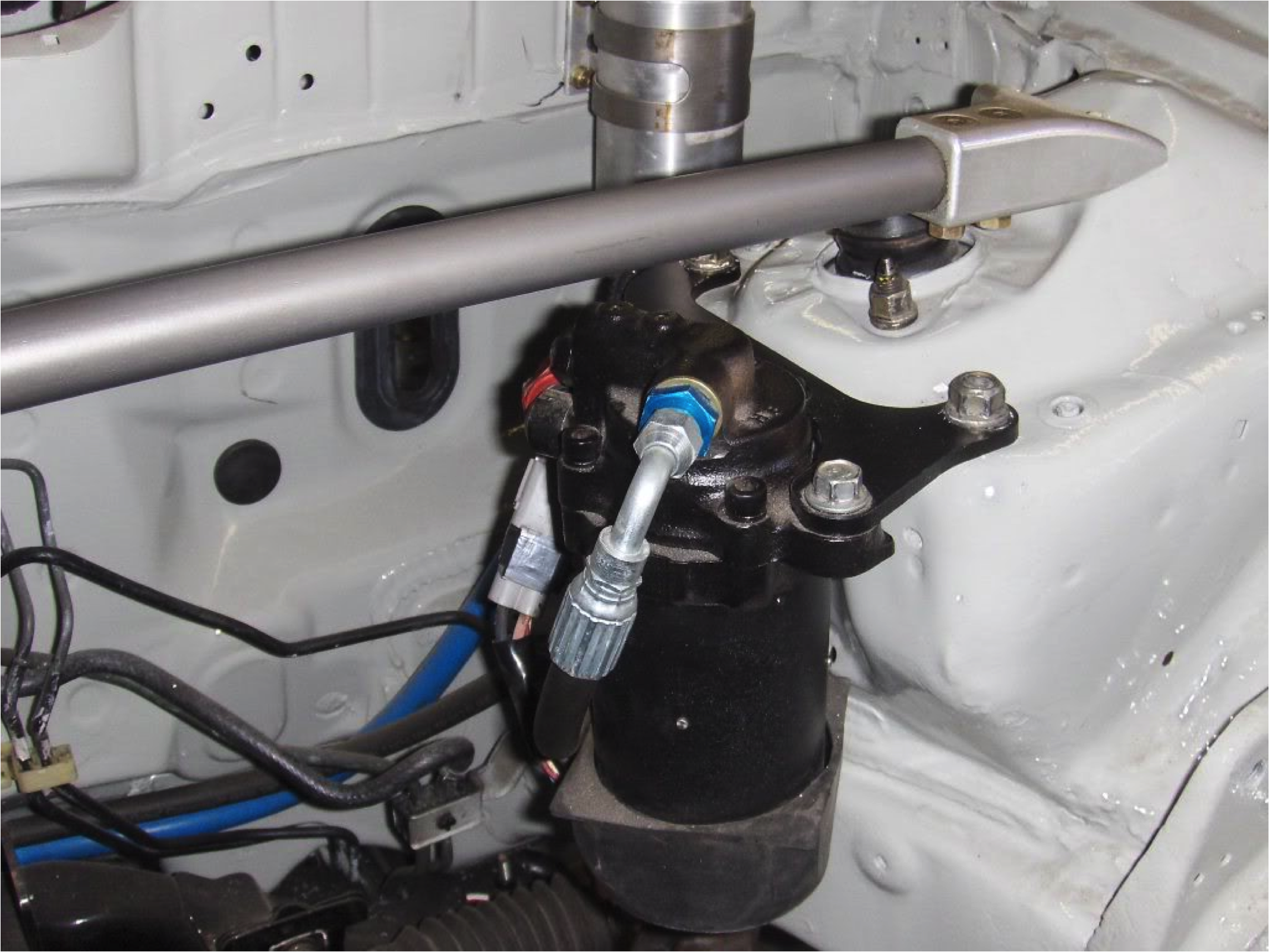
Pic 2
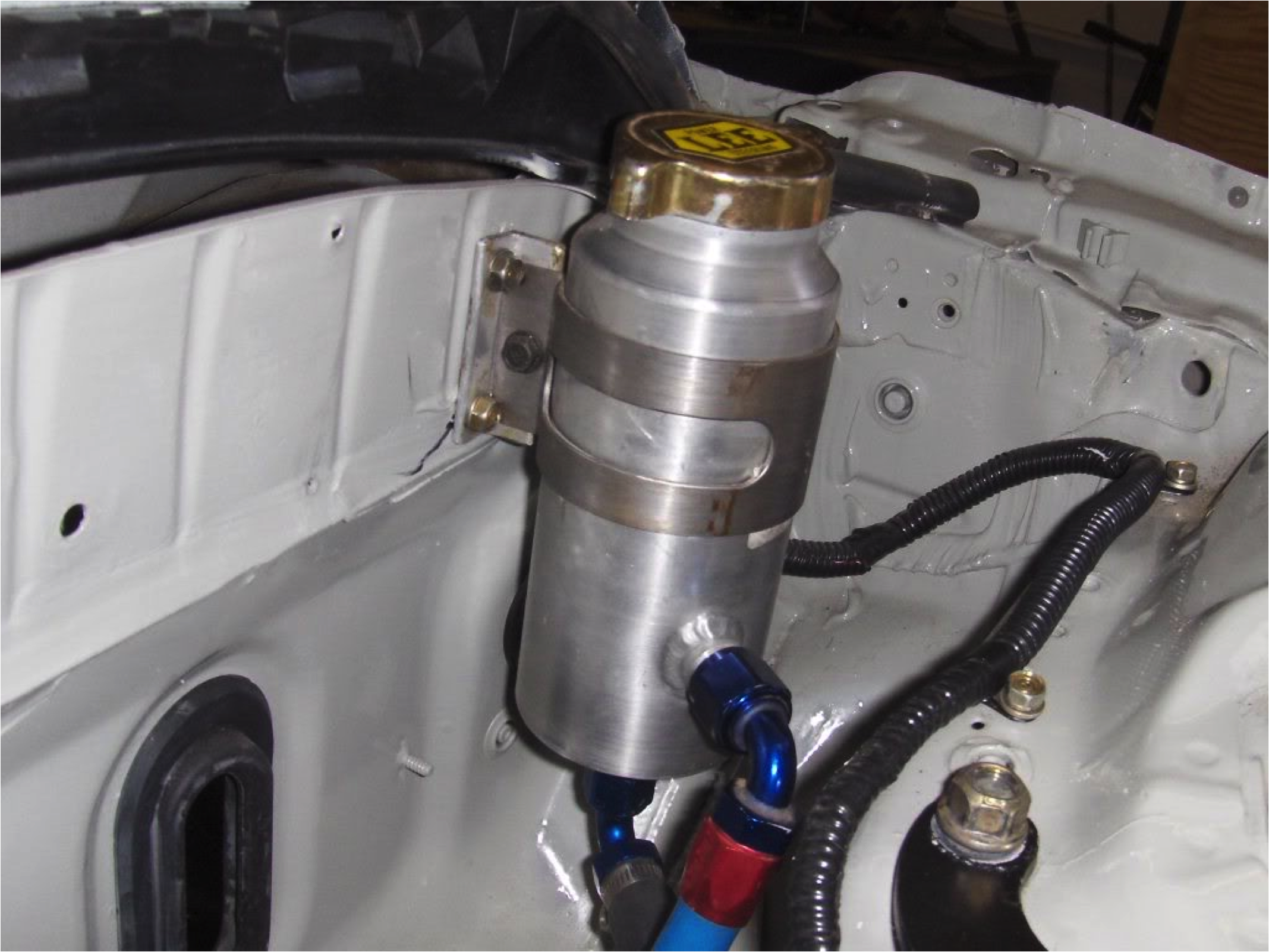
Pic 3

Pic 4
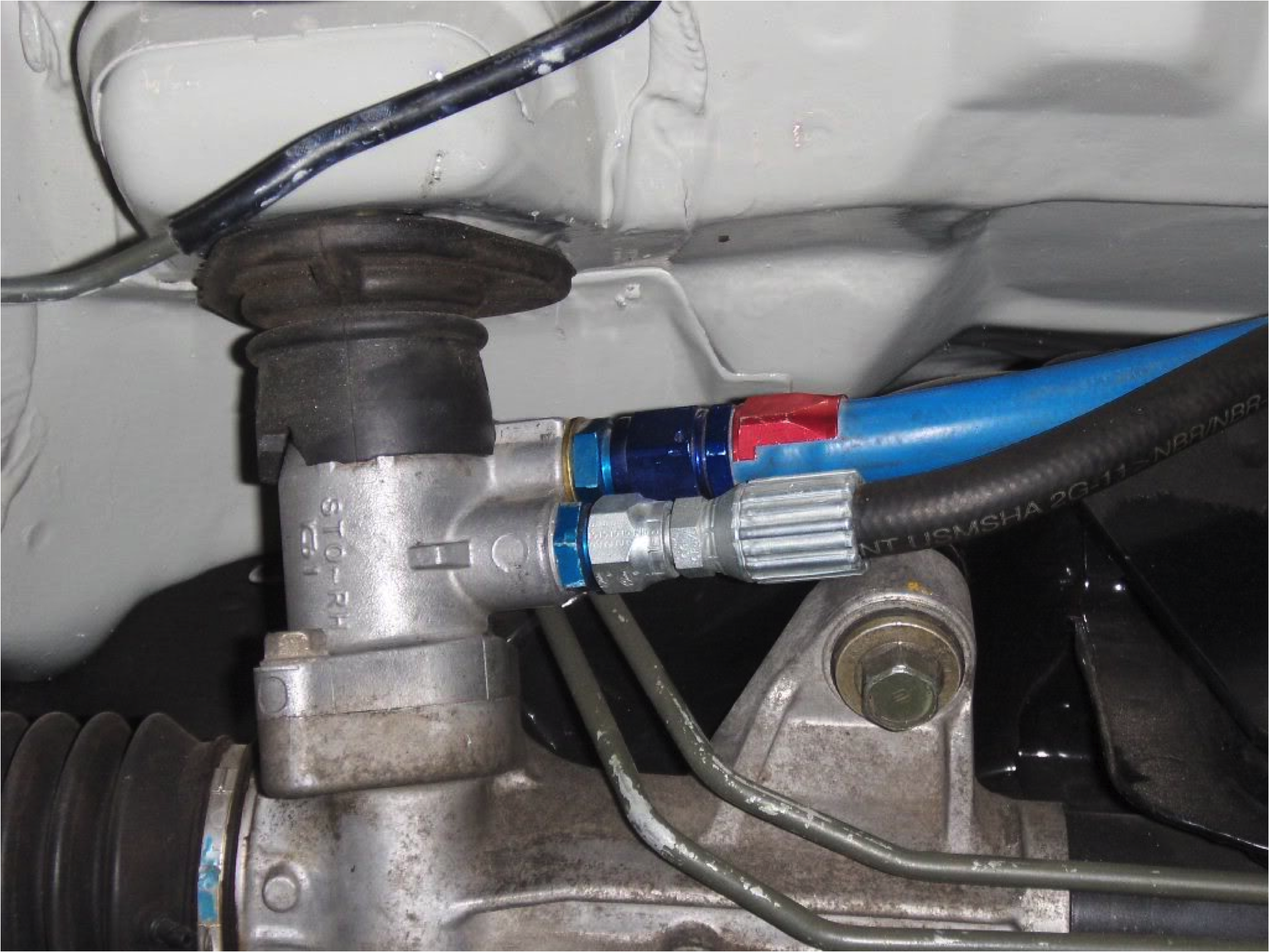
Pic 5

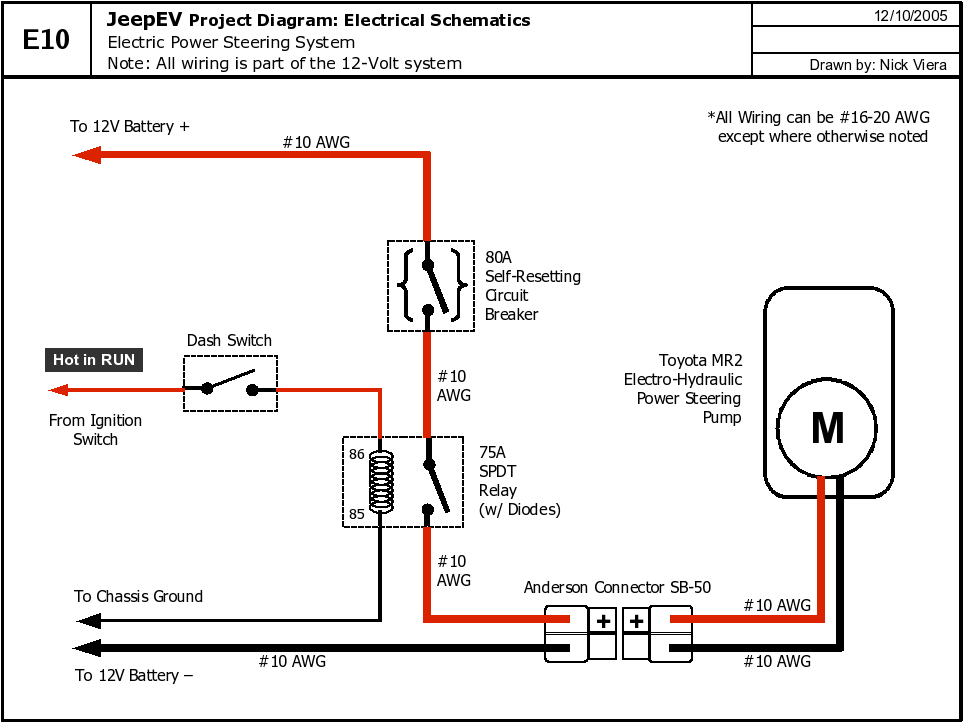
ATTENTION READER:
If you enjoyed the information and article you just read be sure to check out our newly released book with even more exciting photo's and information:How to Turbocharge and Tune your Engine

Want to know more about your particular Make and Model vehicle? All of these vehicles are covered in the tech, maintenance and repair articles found above. Enginebasics is the wiki or wikipedia of car part, repair, how to and tuning information. Let us be the class 101 for your automotive learning.
| Ford | General Motors GM | Pontiac | Jaguar | Land Rover | Nissan |
| Toyota | Honda | Lexus | Acura | Lotus | Scion |
| Infinity | BMW | Mercedes | Mitsubishi | Ferrari | Maserati |
| Lamborghini | Volks Wagen VW | Saab | Audi | Hyundai | Kia |
| Subaru | Mazda | Chevy | Volvo | Caddilac | Dodge |
| Chrylser | Daewoo | Porsche | Mercury | Freightliner | MG |
Individual Models
| Ford Mustang | Mitsubishi Eclipse | Mitsubishi Evo | Subaru WRX / STI | Dodge Viper | Chevrolet Corvette |
| Nissan Skyline | Honda S2000 | Nissan 350z | Toyota Supra | Chevy Camaro | Lotus Elise Exige |
| Honda Civic | VW Golf | Dodge SRT-4 | Eagle Talon | Acura Integra | BMW M3 |
| Nissan 240sx | Porsche 911 | Acura NSX | Honda Accord | Toyota Camry | Toyota MR2 |
| VW R32 | Dodge Truck | Mazda Rx7 | VW Jetta | Sand Buggy | Nissan Sentra |
For the latest Automotive news and stories visit the websites below |
Our feature Build: An AWD V6 Civic




